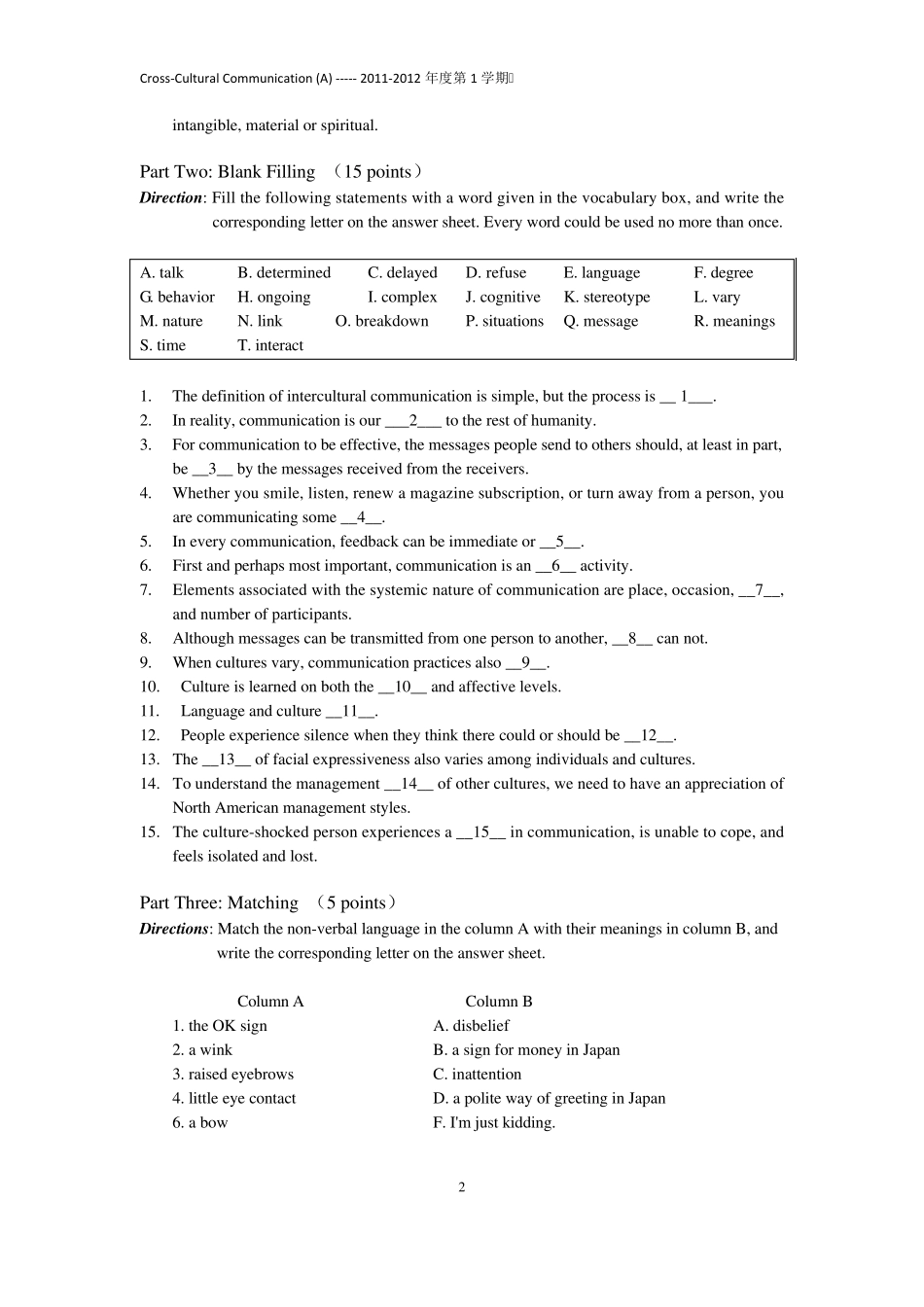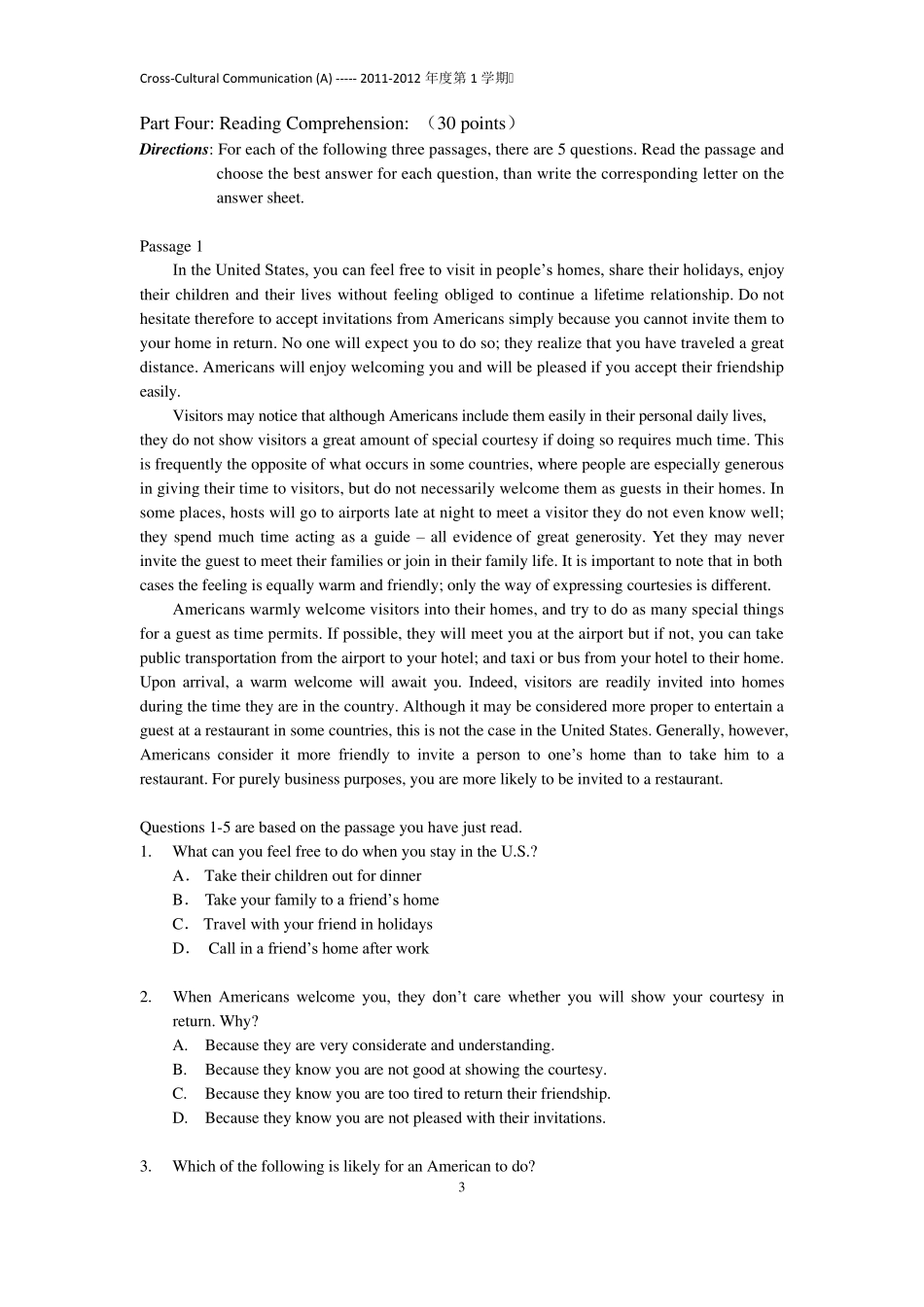Cross-Cu ltu ral Commu nication (A) ----- 2011-2012 年度第1 学期 1 同济大学课程考核试卷(A 卷) 2011 —— 2012 学年 第 1 学期 命题教师签名: 审核教师签名: 课号:110260 课名: 跨文化交际 考试考查:考试 此卷选为:期中考试( )、期终考试(√ )、重考( )试卷 年级 专业 学号 姓名 得分 题项 I II III IV V VI 得分 Part One: True or False (15 points) Directions: Read the following statements and decide whether they are True or False. And write T or F on the answer sheet. 1. In countries with high uncertainty avoidance, people tend to ensure certainty and security through an extensive set of rules and regulations. 2. Culture is a static entity while communication is a dynamic process. 3. All cultures require and value politeness, but the way in which politeness is achieved may vary significantly. 4. Latin American, African, Arabic and most Asian cultures are M-Time cultures. 5. Much of our non-verbal behavior, like culture, tends to be elusive, spontaneous and frequently goes beyond our awareness. 6. Culture shocks are always frustrating, because they always bring negative effects to people in a foreign culture, so culture shocks do no good to people in intercultural communication. 7. People in past-oriented cultures respect old people and place high value on history and experiences. 8. The Japanese believe that socializing is integral to the negotiation process while the Americans do not think so. 9. Germans find humor out of place in business meetings while Americans think telling a joke will help light the atmosphere. 10. Encoding is the process of perceiving and interpreting, or making sense of incoming messages and stimuli from the environment. 11. Americans enjoy talking and interpret silence in a negative...


